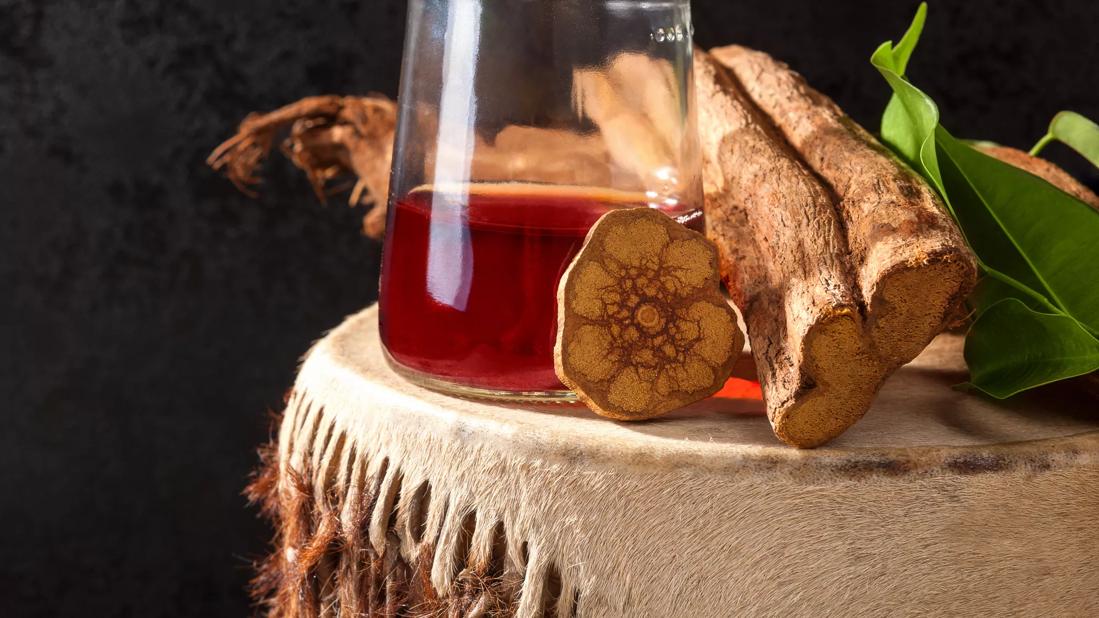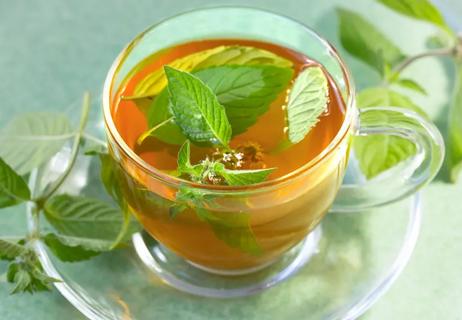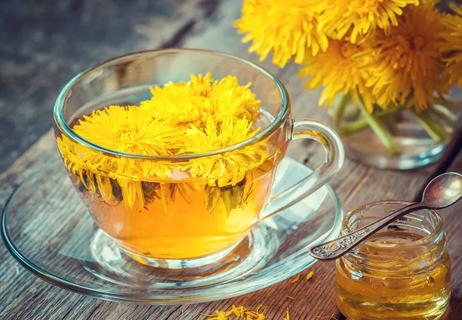The hallucinogenic brew has cultural and religious significance for some communities in the Amazon basin

Ayahuasca means different things to different people. For some communities in the Amazon River basin, it’s a traditional brew with medicinal and spiritual value. For other people — especially those living outside of South America — it’s a psychedelic substance that promises a mind-altering experience worth traveling for. For people living with or researching certain mental health conditions, it may be a long-hoped-for breakthrough.
Advertisement
Cleveland Clinic is a non-profit academic medical center. Advertising on our site helps support our mission. We do not endorse non-Cleveland Clinic products or services. Policy
Conversations about Ayahuasca use are clearly complicated. So, let’s back up and ask a more basic question: What exactly is Ayahuasca? And is it safe to use? We asked addiction psychiatrist David Streem, MD. He details the side effects and risks associated with Ayahuasca — and explains why its main active chemical DMT may be a promising topic for future medical research.
Ayahuasca is a hallucinogenic tea (or occasionally, snuff) made by boiling a mixture of plants. According to Dr. Streem, the main active chemical is a substance called dimethyltryptamine (DMT).
“Ayahuasca is traditionally used by people in the Amazon River basin — that’s South American countries like Peru, Brazil, Colombia and Ecuador,” Dr. Streem shares.
Within these cultures, a shaman or curandero is responsible for preparing Ayahuasca, which has spiritual and religious significance. Outside of ritual use in those countries, DMT can also be smoked, snorted or injected.
“DMT has a structure that looks similar to serotonin, which is a very important brain chemical,” he explains. “The boiling process also releases other chemicals that increase absorption. DMT can also be chemically extracted from the same plants using industrial processes.”
Advertisement
At a chemical level, Ayahuasca is similar to psychedelics like LSD, mescaline and psilocybin. But — unlike those psychedelics — it’s rare to see Ayahuasca in use outside of South America. Instead, curiosity seekers travel to South America to go on guided “Ayahuasca trips.”
DMT is illegal in India, the United Kingdom and most European countries. In the USA and Canada, there are some exceptions allowing the use of Ayahuasca for specific religious observances.
Dr. Streem says people who use Ayahuasca for non-spiritual purposes usually do so because they want to experience side effects they perceive as positive, like euphoria. But that often means they have to endure unpleasant side effects, too.
While research suggests Ayahuasca use is generally safe in a controlled environment, that doesn’t mean it’s risk-free.
Of the more than 10,000 people who completed the Global Ayahuasca Survey, about 70% of the participants experienced physical side effects while using the substance, with nausea and vomiting being the most common (and, frankly, expected) symptom.
Dr. Streem says that the primary risks and side effects of Ayahuasca include:
Less common negative side effects participants reported in the Global Ayahuasca Survey include:
Ayahuasca’s physical side effects tend to be relatively minor and short-lived — only 2.3% of users reported needing medical attention. The impact on mental health can be a bit more intense, both for good and for ill.
About 56% of the Global Ayahuasca Survey respondents reported that they experienced a negative impact on their mental health in the days and weeks following Ayahuasca use. For some, those side effects were significant enough to require the help of a mental health professional.
The top five “negative” mental health impacts reported in the survey, listed from most to least common, were:
This is where it starts to get complicated. Distressing as those (and other) side effects may have been, nearly 90% of the participants who reported these experiences saw them as part of “a positive process of growth or integration.” (The survey didn’t investigate the long-term impact on the other 10%.)
Advertisement
Interestingly, the why of Ayahuasca use seemed to play a role in the kind and severity of mental health side effects: People whose cultural or spiritual practices involved Ayahuasca use had notably fewer negative experiences than people who used it in an uncontrolled or recreational context.
So, are these “negative” side effects negative? And who gets to decide? Questions like these are why research that deals with spirituality, culture and psychopharmacology gets so messy so fast. It’s also part of the reason that some researchers suspect Ayahuasca may be beneficial when used in a controlled medical setting. More on the possible future of DMT in a bit — first we need to cover the risks of Ayahuasca use that go beyond side effects.
Right about now you may be wondering: Is Ayahuasca addictive? While it can be habit-forming, that’s not the risk that’s front of mind for Dr. Streem.
“Rather than addiction,” he notes, “my main concern around Ayahuasca is the risk of overdose and the risk of immediate harm to people experiencing the effects of the drug. Elevated heart rate and blood pressure indicate that there’s increased stress on the heart and increased heart oxygen needs, which increases the risk of heart attack.”
Advertisement
Coma, seizures, asphyxiation and other life-threatening events, while rare, can also occur while using DMT — especially if it’s combined with other substances like alcohol or opiates.
Ayahuasca preparation is spiritually significant. Unfortunately, it also makes it riskier to ingest.
“Boiling plants in water is a very imprecise method for preparing any drug,” Dr. Streem explains. “The same is true of burning a plant and inhaling the smoke. Plant-based medications that aren’t being used for recreational or spiritual purposes are rarely produced in this form.”
As with any mind-altering substance, Ayahuasca use also comes with a risk of indirect harm. For example, while in an altered state of consciousness, a person might engage in dangerous behavior that leads to injury or death. That risk is higher for people using Ayahuasca in concert with other substances and for individuals experiencing depression, anxiety, psychosis, mania and related mental health symptoms.
Ayahuasca can also interact with a wide range of prescription medications, including:
Advertisement
Dr. Streem notes that someone who uses Ayahuasca alongside medications that raise serotonin levels runs the risk of developing a specific kind of drug reaction called serotonin syndrome, which can cause mild, moderate or life-threatening symptoms, depending on its severity.
Dr. Streem doesn’t advocate Ayahuasca use. But he’s also clear that the setting matters when discussing its risks. In a clinical or research setting, the risk of complications from Ayahuasca use is quite low. The risk increases as the setting becomes less controlled.
“If you’re sitting at home by yourself using DMT, that’s the most concerning and the most dangerous setting,” he clarifies.
If you’re familiar with Ayahuasca, you may have heard that researchers think it has the potential to help with a wide range of mental health conditions, like substance-use disorder (SUD), substance withdrawal, eating disorders, treatment-resistant depression (TRD) and post-traumatic stress disorder (PTSD). Still others suggest it may have neuroprotective and neurorestorative properties.
Those claims do exist and, in some cases, have preliminary research behind them. But don’t expect to see Ayahuasca in the tea aisle at a grocery chain any time soon.
“Since research is generally driven by federal grants and national industry in the U.S., as long as a drug is listed as a Schedule I controlled substance, it’s very difficult to study,” Dr. Streem says. Without that research, it’s unlikely we’ll see any changes in Ayahuasca’s designation any time soon.
While Ayahuasca therapy’s still a long way off in the U.S. and most of Europe, it’s likely the FDA will be approving hallucinogenic treatments — or medications derived from hallucinogenic substances — for post-traumatic stress disorder, depression and anxiety soon.
Both psilocybin and MDMA (commonly referred to as “molly” or “ecstasy”) received “breakthrough therapy” designations in the last decade. The FDA uses that label to speed up research into and approval of treatments for serious conditions. That’s something they only do when clinical research is promising enough to suggest the new treatment may “demonstrate substantial improvement over available therap[ies].”
If you’re living with a treatment-resistant mental health condition, it can be hard not to pin your hopes on a substance like Ayahuasca, which seems like it could be a quick fix. But instead of seeking out DMT or waiting for hallucinogenic therapies to become mainstream, Dr. Streem suggests learning about the clinically proven treatment options that already exist.
“With the emergence of telehealth, cutting-edge counseling techniques are more accessible than they’ve ever been before,” he says. “And there are lots of options that people don't know about for addressing depression, anxiety, addiction and PTSD.” From transcranial magnetic stimulation (TMS) and eye movement desensitization and reprocessing therapy (EMDR) to electroconvulsive therapy (ECT), there are lots of potential options to explore.
Ayahuasca is a psychedelic tea that contains dimethyltryptamine (DMT). While illegal in many countries, it has religious and ritual significance to several cultures and communities in the Amazon River basin. Some people travel to South America to experience its mind-altering properties under the direction of a shaman or curandero.
Research into DMT and other psychedelics suggests that there may be health and therapeutic benefits associated with its use in highly controlled settings. While most people report positive experiences, Ayahuasca use causes a wide range of side effects of varying severity and can have potentially life-threatening complications. It’s not recommended for medicinal or therapeutic use at this time.
Learn more about our editorial process.
Advertisement

Tart cherry juice contains natural compounds that may support better sleep

This herbal drink may ease allergies and boost prostate health

You can release serotonin, oxytocin, dopamine and endorphins by cooking a meal, walking outside, petting your dog and more

Catechins (antioxidants) in green tea help fight inflammation and diabetes, while improving memory and heart health

Chamomile, lavender and valerian root teas may offer a faster route to dreamland

This subtly minty beverage can help balance hormones and loosen stiff joints

Weeds be gone! This tea contains lots of antioxidants and may help reduce inflammation

Flavonoids in black tea are good for your health, helping prevent strokes and heart disease

Start having sex about 72 hours before ovulation, then at least every other day during your fertile window

Attachment theory suggests that your earliest relationships shape connections throughout your life

It isn’t a recognized mental health disorder, but research shows that problematic social media use can negatively affect your mental health, self-esteem and sleep